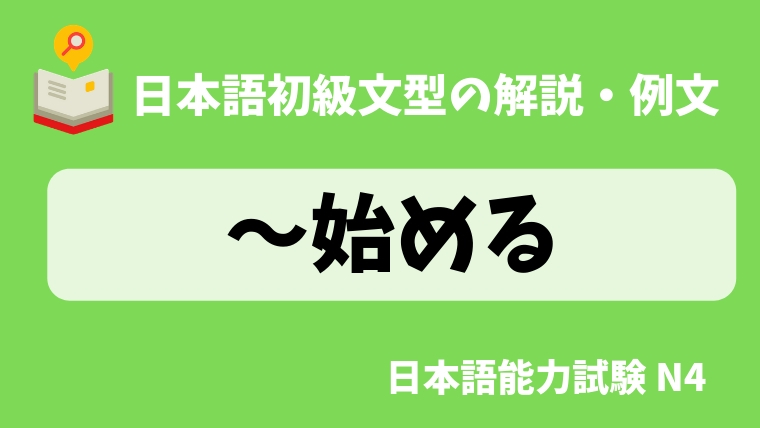(2025/12/24 11:09:07時点 Amazon調べ-詳細)
解説:〜始める
●意味
動作や現象、習慣などがは始まるという意味。
It indicates the beginning of an action, phenomenon, habit, etc.
●接続
V(ます形)ます + 始める。
●日本語能力試験(JLPT)のレベル
N4
例文
まだ山田さんが到着していないけど、飲み始めましょう。
Yamada-san hasn’t arrived yet, but let’s start drinking.
3月になって、少しずつ桜が咲き始めました。
The cherry blossoms have started to bloom little by little since March.
最近、日本のニュースを見始めましたが、難しい言葉がたくさんあって全然わかりません。
I’ve recently started watching Japanese news, but there are so many difficult words that I don’t understand at all.
来週から、中国語を勉強し始めるつもりです。
I plan to start studying Chinese next week.
バンドが演奏し始めると、周りの客が踊り始めた。
When the band started playing, the people around them started dancing.
ポツポツと雨が降り始めた。
It started raining lightly.
空が暗くなり始めたので、帰りましょうか。
The sky is getting dark, so let’s head home.
チャイムが鳴ったので、みんなが席に座り始めた。
The bell rang, so everyone started taking their seats.
父は今週から、週2でジムに通い始めた。
My father started going to the gym twice a week this week.
来年から、友達はアメリカに住み始める予定です。
My friend is planning to start living in the United States next year.
「〜だす」と「〜始める」の違い

類似文型




